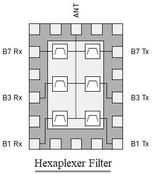Mobile Edge Computing (MEC) Explained
Advertisement
This article explains the basics of Mobile Edge Computing (MEC) and its benefits.
- Mobile Edge Computing (MEC) refers to IT services offered to application developers and content providers at the edge of the wireless telecom network. MEC provides high bandwidth, low latency, and real-time access to the radio network, which applications can then utilize.
- The primary purpose of MEC is to unite the telecom and IT worlds, facilitating the convergence of telecom networking and IT.
- MEC provides IT and cloud computing capabilities within the mobile radio access network (RAN), hence the name “mobile edge computing.”
- Applications and services are developed and integrated above layer-3 (the network layer) of mobile network elements (NEs).

The figure illustrates the integration of MEC applications and services within the LTE system architecture. As shown, it’s implemented between the eNodeB and the mobile core with the help of a MEC server. Cloud services are seamlessly interfaced with the mobile core, ensuring no changes to the lower layers (PHY, MAC) of the UE and eNodeB network elements.
There are many use cases for mobile edge computing, including active device location tracking, the Internet of Things (IoT), video analytics, augmented reality content delivery, data caching, and efficient local content distribution.
Benefits and Advantages of Mobile Edge Computing
Here are the benefits and advantages of mobile edge computing:
- MEC is designed to benefit various entities, including operators, software vendors, equipment providers, system integrators, IT platform providers, application developers, and technology providers.
- By deploying services and providing data caching at the mobile network edge, mobile core networks can be relieved from congestion. This helps in efficiently serving local services.
- An MEC part can be run in isolation from the rest of the network while still having access to local resources. This makes it suitable for M2M scenarios requiring safety or security-compliant, highly resilient systems.
- As the MEC system is close to information storage, it’s useful for big data and analytics applications.
- Services run close to end devices, delivering low latency. This enables fast responses, minimizing congestion and providing a great user experience.
- The network edge, being part of a larger wireless network including Wi-Fi and cellular mobile networks, helps in determining the location of all wirelessly connected devices.
- Real-time network information, such as radio network conditions and network statistics, can assist in developing applications and services for monetization. This connects subscribers and users with various businesses, events, and locations of interest.
- Edge computing can be applied in both indoor and outdoor scenarios.
The Industry Specification Group (ISG) of ETSI oversees the development of MEC (Mobile Edge Computing) specifications, including various other wireless standards such as GSM, UMTS, and LTE. For more information, visit www.etsi.org.
Advertisement
 RF
RF

